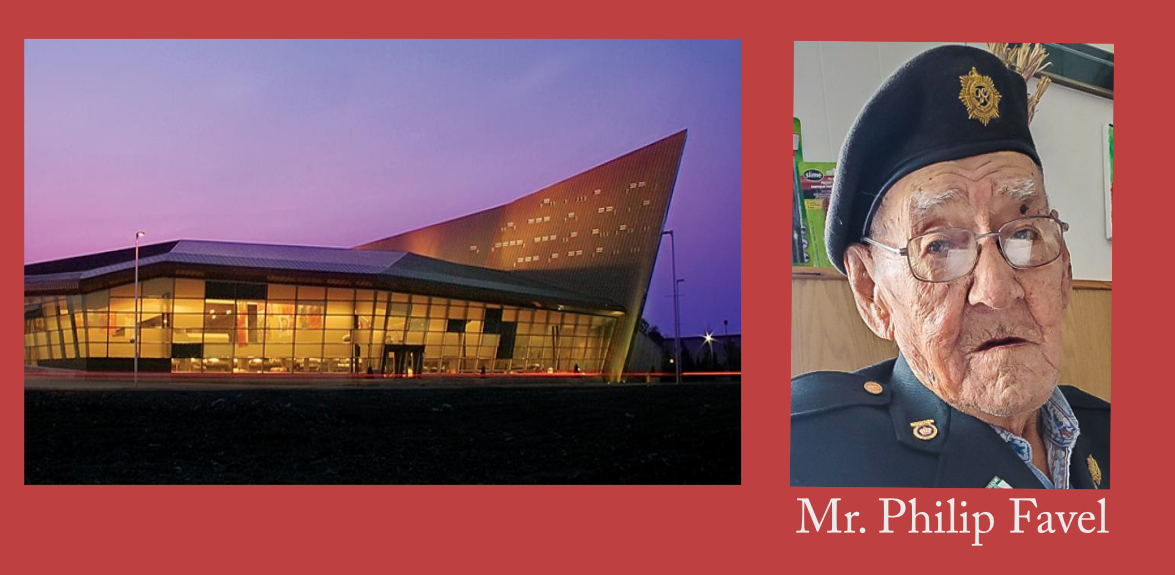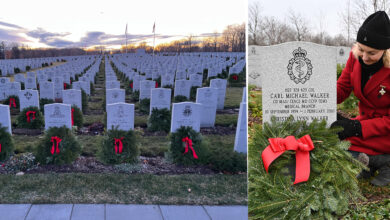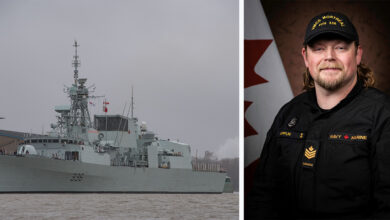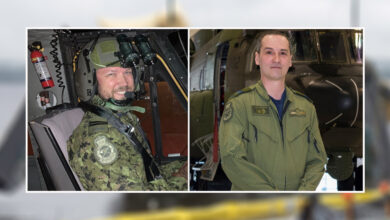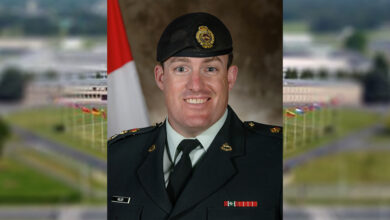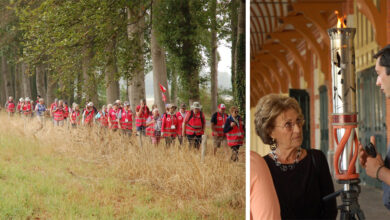Remembering
Second World War veteran commemorated on Indigenous Veterans Day
On November 8, Indigenous Veterans Day, the Canadian Armed Forces (CAF) and the Canadian War Museum honoured the service of Indigenous Veteran Mr. Philip Favel.
“Today, we pay tribute to Private Philip Favel who answered Canada’s call to protect freedom and democracy in the Second World War and then fought on to ensure fairness for Indigenous Veterans. I thank him for his heroism on the beaches of Normandy and for his courage here at home on behalf of fellow veterans,” stated Harjit S. Sajjan, Minister of National Defence.
Nadine Favel, Mr. Favel’s granddaughter, represented him at the ceremony.
Mr. Favel served in the Second World War, and since coming home, he has continued to fight for fair compensation for Indigenous Veterans. As part of the ceremony, a portrait of Mr. Favel, painted by Ottawa-based artist Elaine Goble was displayed at the Canadian War Museum.

Normandy Warrior was generously donated by the artist to the Museum and will be added to the Museum’s national collection. The portrait will be on prominent display at the Museum until January 2021.
Caroline Dromaguet, acting director-general of the Canadian War Museum, commented that the Museum is honoured to receive the donation of Normandy Warrior, and it is a privilege to add the outstanding portrait to the Canadian War Museum’s national collection and display it for visitors.
Normandy Warrior is an enduring tribute to Mr. Favel’s service with the Royal Canadian Army Service Corps in the Second World War and his postwar efforts as an advocate for Indigenous Veterans.
Anita Vandenbeld, parliamentary secretary to the minister of national defence, expressed that Private Philip Favel is a hero who deserves this kind of celebration.
“His courage and bravery during the Second World War are inspirational. I am honoured to be a part of this celebration to recognize the significant contribution he and so many other Indigenous Veterans made to Canada. I am pleased to know that his portrait will hang in the War Museum for all Canadians to see and remember,” said Vandenbeld.
A farmer’s son from the Sweetgrass First Nation in Saskatchewan, Mr. Favel enlisted in the Canadian Army in 1942 at the age of 20. He served in the Royal Canadian Army Service Corps. He landed in Normandy on D-Day, as part of Operation OVERLORD during the Second World War, and throughout his two years in Europe, he delivered vital supplies to front line troops.
Many First Peoples soldiers returned from the war, hoping that their sacrifice and achievements on the battlefield would lead to greater recognition and improved living conditions at home. However, federal policy extended many post-war benefits to Aboriginal veterans, but not as many as those accorded non-Aboriginals. The war didn’t signal a broader breakthrough in civil liberties for First Nations. Many Aboriginal veterans were then politically active in the protection of their communities and the advancement of First Nations rights.
Chief of the Defence Staff General Jonathan Vance mentioned that he had the pleasure of meeting Private (Retired) Philip Favel at his home in 2018.
“He is part of the generation that won the Second World War. His fighting did not end in Europe. He came home to fight for Indigenous Veterans. He is a Canadian hero, and I thank him for his service to his country,” said Vance.
Mr. Favel has been recognized with many medals for his service, including the 1939-45 Star and National Order of the Legion of Honor (France).
After the Second World War and his release from the military in 1945, Mr. Favel began his ongoing advocacy for Indigenous Veterans and later served as Grand Chief of the Saskatchewan First Nations Veterans.
Close to 4,000 members of the Canadian Expeditionary Force were of Aboriginal descent, which is a significant number considering the limited civil rights accorded Canada’s First Peoples in the early twentieth century.
“It is fitting we honour Mr. Philip Favel on Indigenous Veterans Day. Each November 8, we give thanks to the men and women of Canada’s First Nations, Inuit, and Métis communities for their service and sacrifices. Mr. Favel is one of over 12,000 Indigenous Peoples who have served Canada in the major conflicts of the 20th century,” says Lieutenant-General Wayne Eyre, Commander Canadian Army and Defence Team Champion for Indigenous Peoples.
Close to 4,000 members of the Canadian Expeditionary Force were of Aboriginal descent, which is a significant number considering the limited civil rights accorded Canada’s First Peoples in the early twentieth century.
First Peoples troops left a record of wartime accomplishment. Several of them were commissioned as officers, and lots served as platoon leaders and combat instructors. Approximately 50 were decorated for bravery on the battlefield. Many acquired near-legendary status as scouts and snipers, drawing on pre-war hunting skills and wilderness experience.
Many First Peoples soldiers returned from the war, hoping that their sacrifice and achievements on the battlefield would lead to greater recognition and improved living conditions at home.
However, federal policy extended many post-war benefits to Aboriginal veterans, but not as many as those accorded non-Aboriginals. The war didn’t signal a broader breakthrough in civil liberties for First Nations. Many Aboriginal veterans were then politically active in the protection of their communities and the advancement of First Nations rights.


